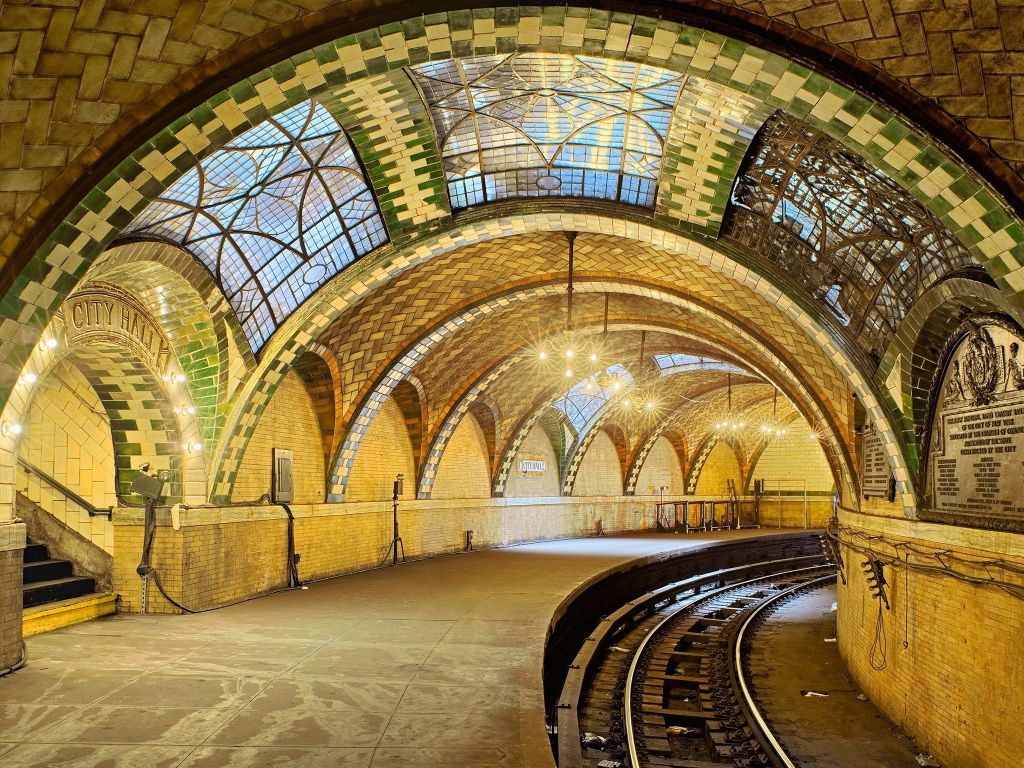Forgotten Subway Stations: Unveiling the Hidden Gems of Urban Exploration
In the bustling cities we inhabit, subway stations are often taken for granted. We rush through them every day, barely sparing a glance at the platforms and tunnels that carry us to our destinations. But what if I told you that below the surface lies a fascinating world of forgotten subway stations? These hidden gems hold stories of a bygone era and offer a glimpse into the rich history of urban transportation. Today, we embark on an exploration of these abandoned underground treasures.
1. City Hall Station – New York City, USA:
Let’s begin our journey with one of the most renowned forgotten subway stations in the world – City Hall Station in New York City. Opened in 1904 as part of Manhattan’s first subway line, this station was designed to be an architectural masterpiece. With its elegant chandeliers, ornate tiles, and vaulted ceilings adorned with Romanesque arches, it exuded opulence.
As time went on and newer trains were introduced to accommodate longer platforms, City Hall Station became obsolete due to its curve being too sharp for modern equipment. In 1945, it closed its doors to regular service but has since become a popular destination for urban explorers.
Today, lucky visitors can catch glimpses of this stunning station during occasional transit tours or while riding downtown-bound 6 trains which pass through without stopping. Its grandeur remains intact beneath layers of dust and echoes from distant footsteps seem to whisper tales from another era.
2. Saint-Martin Metro – Paris, France:
Next on our list is Saint-Martin Metro in Paris – an atmospheric station that will transport you back in time! Located along Line 9 between République and Strasbourg-Saint-Denis stations lies this hidden gem waiting to be rediscovered.
Saint-Martin Metro was opened in 1931 but closed abruptly during World War II when Paris faced the threat of bombings. Since then, it has remained untouched, preserving its original Art Deco design. The station’s ornate ironwork and colorful ceramic tiles tell a story of a time when transportation was not just functional but also a work of art.
While Saint-Martin Metro may be off-limits to regular passengers, there have been occasional opportunities for urban explorers to venture into its abandoned tunnels. These brave souls are rewarded with an eerie yet captivating experience as they wander through darkened corridors that once buzzed with life.
3. Down Street Station – London, England:
Moving across the English Channel, we find ourselves in London exploring Down Street Station. Located between Hyde Park Corner and Green Park stations on the Piccadilly Line, this hidden gem served as a secret wartime bunker during World War II.
In 1939, as war loomed over Europe, Down Street Station was closed to the public and transformed into an underground command center for Winston Churchill’s government. The disused platforms were converted into offices and meeting rooms where key decisions were made during the Blitz.
Although no longer accessible to the public due to safety concerns, remnants of its wartime past can still be seen through tours organized by Transport for London (TfL). Visitors can walk in Churchill’s footsteps and gain insight into how this forgotten subway station played a crucial role in British history.
4. City & South London Railway – King William Street Station – London Underground:
Staying in London but venturing deeper into history takes us to King William Street Station – one of the first ever underground railway stations in the world! Opened in 1890 as part of the City & South London Railway (now part of Northern Line), this station pioneered subterranean travel.
The unique feature of King William Street Station was its location beneath one of London’s busiest intersections – Monument Junction. However, due to low passenger numbers caused by competition from nearby stations, it closed its doors in 1900 and became a ventilation shaft for the Underground.
While this station is not accessible to the public, London Transport Museum occasionally organizes tours that allow visitors to glimpse into its past. Stepping into King William Street Station feels like stepping back in time, as you wander through tunnels that once buzzed with excitement during the early days of underground transport.
5. South Kentish Town Tube Station – London, England:
Our final stop on this urban exploration tour takes us to South Kentish Town Tube Station, located on Northern Line’s High Barnet branch. This unique station holds a significant place in history as one of Charles Holden’s architectural masterpieces.
Opened in 1907, South Kentish Town was designed with an innovative blend of Edwardian and Art Nouveau styles. Its striking red brick facade and grand arches make it stand out among other stations on the line. However, low passenger numbers led to its closure in 1924.
Today, although inaccessible to regular commuters, South Kentish Town Station has found new life as a storage facility for film props and sets. The decaying platforms now serve as atmospheric backdrops for various movie scenes captured by filmmakers who appreciate its unique charm.
In conclusion, forgotten subway stations offer us an opportunity to delve into the past while reflecting on how our cities have evolved over time. These hidden gems remind us that beneath our busy streets lies a labyrinth of stories waiting to be discovered.
Whether it be New York City’s City Hall Station or Paris’ Saint-Martin Metro, each abandoned station has its own tale – tales of grandeur turned obsolete or wartime secrets concealed beneath layers of dust. Exploring these forgotten spaces allows us to appreciate the artistry and engineering prowess that went into creating them while igniting our imagination about what might lie beneath other familiar places we encounter every day.
So next time you descend those familiar subway stairs or board your usual train, take a moment to appreciate the history that lies beneath your feet. Who knows what hidden treasures await you on your urban exploration adventure?

Leave a comment